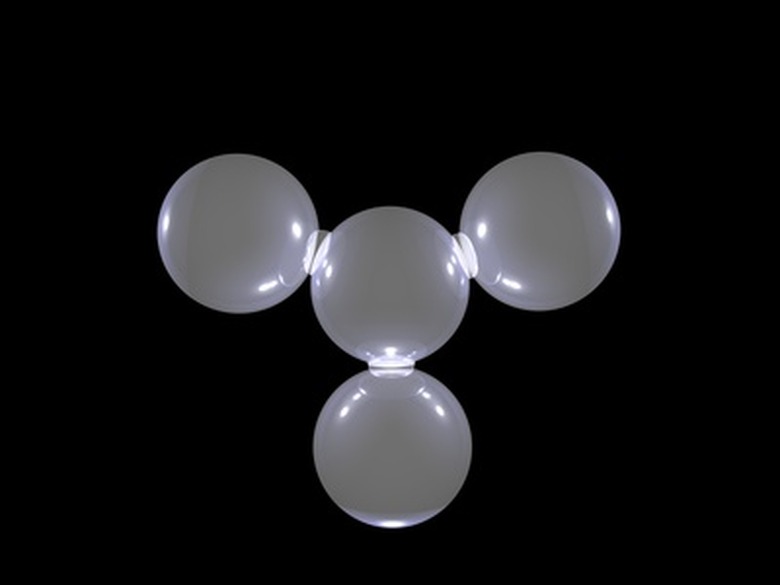Projects On Chemical Bonding
Chemical bonds hold together atoms in compounds. There are two kinds of chemical bonds: covalent and ionic bonds. Covalent bonds form when two atoms share electrons to fill their outermost valence shells. Ionic bonds form when one atom steals the electrons from another atom, creating positive and negative ions binding the two atoms together. Chemical bonding projects can help students understand these difficult and elusive concepts.
Element Cards
Element Cards
Create element cards with different elements that will create covalent and ionic bonds. All elements should have their outer valence electron shells shown. A common compound that has a covalent bond is sodium (Na) and chlorine (Cl). Sodium has one valence electron, and chlorine has seven. By sharing sodium's electron, both elements are able to have a complete outer shell. A common ionic bond is hydrogen (H) and chlorine. Hydrogen has one outer valence electron, just like sodium; however, hydrogen only has one electron. Chlorine takes hydrogen's electron. It is not sharing. Repeat with other cards, creating different covalent and ionic bonds.
Heat Testing
Heat Testing
Covalent and ionic bonds have different bonding strengths. Adding energy–heat in most cases–will show those differences within just a few minutes. Take a known covalently bonded compound and heat it. The compound should melt after only a few minutes. Provide an ionic compound and heat it. The ionic bond should not break under the heat provided in a lab setting.
Dissolving Test
Dissolving Test
Another difference between covalent and ionic bonds is their ability to dissolve. Use both water and ethanol. Dissolve compounds in both liquids. Both covalent and ionic compounds will dissolve in water. However, in ethanol only covalent bonded compounds will dissolve. Ionic compounds will not dissolve in ethanol.
Conduction of Electricity
Conduction of Electricity
Once the compounds have been dissolved in water, they can be tested to see whether they convey electricity. Covalent bonds will not convey electricity. Dissolved ionic compounds will convey electricity.
References
Cite This Article
MLA
Carpenter, Michael E. "Projects On Chemical Bonding" sciencing.com, https://www.sciencing.com/projects-chemical-bonding-7513341/. 24 April 2017.
APA
Carpenter, Michael E. (2017, April 24). Projects On Chemical Bonding. sciencing.com. Retrieved from https://www.sciencing.com/projects-chemical-bonding-7513341/
Chicago
Carpenter, Michael E. Projects On Chemical Bonding last modified August 30, 2022. https://www.sciencing.com/projects-chemical-bonding-7513341/
